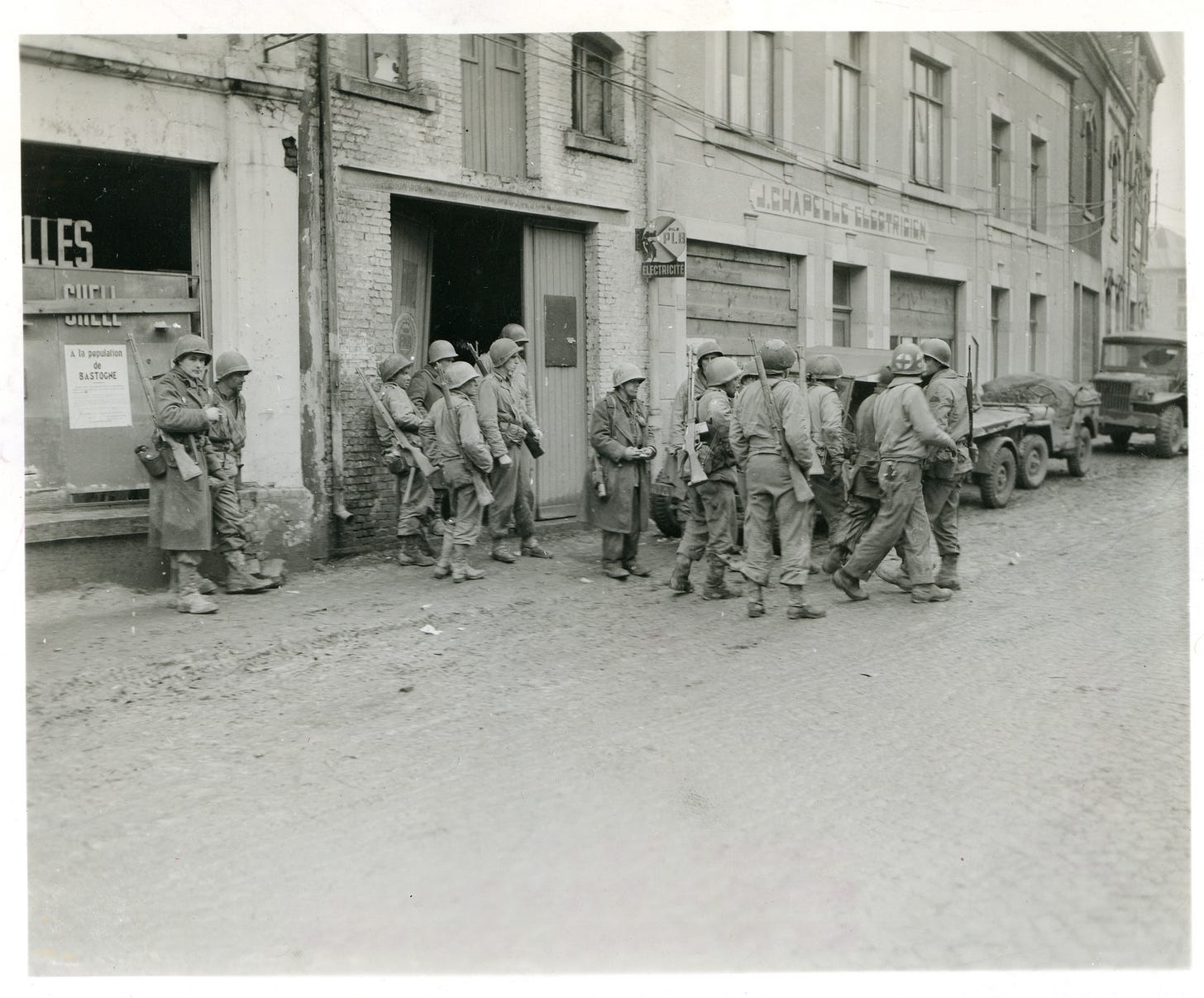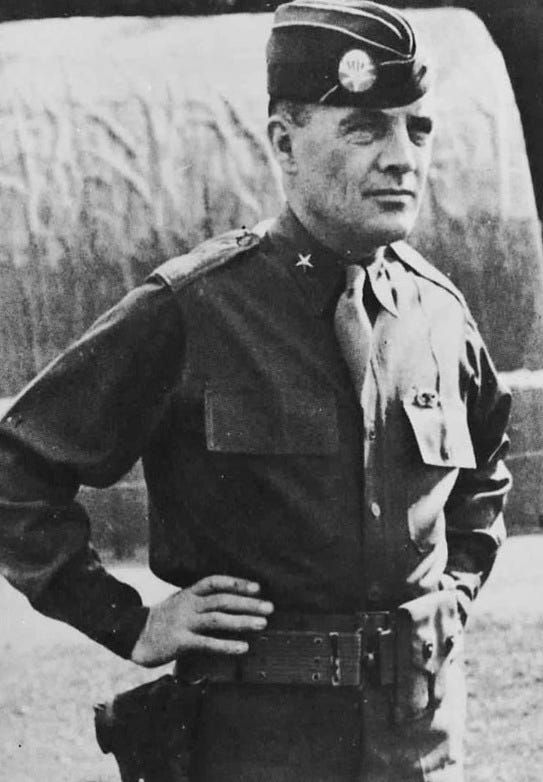History of Place: Bastogne and the Battle of the Bulge
Nineteen thousand U.S. soldiers died in the Battle of the Bulge in December 1944. Americans have largely forgotten but the Belgians have not.

“Nuts!”
Today, few are still alive who remember World War II, and where and by whom this famous retort was uttered. Yet American General Anthony McAuliffe’s reponse to German Lt. Gen. Heinrich F. von Luttwitz, who had demanded that McAuliffe’s besieged 101st Airborne Division surrender the Belgian town of Bastogne, is permanently embedded in the lexicon of rousing epithets from that war.
But ours is not an age of heroes. The days of the good fight are long behind us, and our memories have gone dim. Although McAuliffe’s one-word rejoinder might have made a good sound bit if the Battle of the Bulge were to be fought today, the networks would probably cut back to a retired officer in the studio to explain exactly what the general meant.
As it was, von Luttwitz’s translators were not familiar with this American colloquialism and had to be told that it was essentially synonymous with “go to hell.”
McAuliffe was not about to hand over Bastogne, the crossroads of a fragile but strategic network of roads through the vast Ardennes Forest. Had he and his troops not held on, what came to be known as “Hitler’s last gamble”—Germany’s attempt to recreate the 1940 Blitzkrieg through the Ardennes and reverse the disaster of the Allied invasion at Normandy—might have paid off. At best, from the Allied point of view, victory in Europe would have been delayed for many months.
Today, Bastogne is probably as famous for its butcher shops as for the butchery that raged around its outskirts nearly 80 years ago. Windows filled with dark, aged Ardennes ham and smoked sausages line the Grande Rue, along with a number of friteries, where you can buy what the British call chips, the Americans call French fries, and the Belgians make better than anyone.
The only time you are likely to see someone in a uniform is when the members of the Brotherhood of Pig Herders don their ceremonial red cloaks at the call of their Grand Master.
Yet the people of Bastogne have not forgotten what happened here. Or at least they have erected enough monuments so they can get on with their lives while the tourists do the remembering.
On one corner of the main square, aptly named the Place McAuliffe, a Sherman tank sits next to a bust of the American general on a pedestal, while on Mardasson Hill a massive memorial to the 19,000 Americans who died in the Battle of the Bulge looks down on the town and its surrounding fields and forests.
“…aged Ardennes ham and smoked sausages line the Grande Rue, along with a number of friteries, where you can buy what the British call chips, the Americans call French fries, and the Belgians make better than anyone.”
The essential part of a pilgrimage to this former battleground is a visit to the Bastogne War Museum, which shares Mardasson Hill with the memorial. Here, in a star-shaped black building erected by the town, the Belgian collector Guy Arend had deposited his imposing hoard of war memorabilia.
When I visited, a lineup of mannequins dressed in every manner of battle garb occupied the center of the main exhibit hall, and surrounding this military fashion show were glass cases stuffed with thousands of items indispensable to the soldier of the day: Tins of foot powder and insecticide, travel toothbrushes and bars of soap suitable for use “in soft, hard or sea water at any reasonable temperature.”
Also on display were a number of propaganda leaflets that the Germans, knowing that Christmas 1944 was fast approaching, dropped on the American boys holed up in the town.
“Listen Yank: Are you a sucker?” one of them began. Another featured a smiling skull wearing a helmet and mouthing the words “Waiting for You,” while on the reverse side a buxom young woman with a plunging neckline was “Longing for You.”
The high point of my visit was a 15 minute recreation of the battle for Bastogne, projected on a large floor screen annotated in several languages. The thrusts and parries of the opposing armies were indicated by moving arrows—the Americans were blue, the Germans red—while a soundtrack played military music to a background of machine gun fire and explosions.
It was pretty rousing stuff, especially when General George Patton’s troops broke through the German lines and saved the 101st Airborne. Patton—who was battling away in the Saarland at the time—had ordered his troops to “drive like hell,” and arrived at the edge of Bastogne the day after Christmas, no doubt with his trademark ivory-handled revolvers flapping at his hips.
It was an expensive lesson for the Americans, who had ignored warnings from the British—notably Winston Churchill and Field Marshal Bernard Law Montgomery—that by leaving the thick forests and narrow valleys of the Ardennes weakly defended they were asking for trouble.
Montgomery, Allied Supreme Commander Dwight D. Eisnehower, and numerous other generals and statesmen would continue to argue the point in their memoirs for years afterwards.
Note: This article is adapted from two pieces I published about Bastogne and the Battle of the Bulge during the 1990s, for the International Herald Tribune and the Washington Post.





